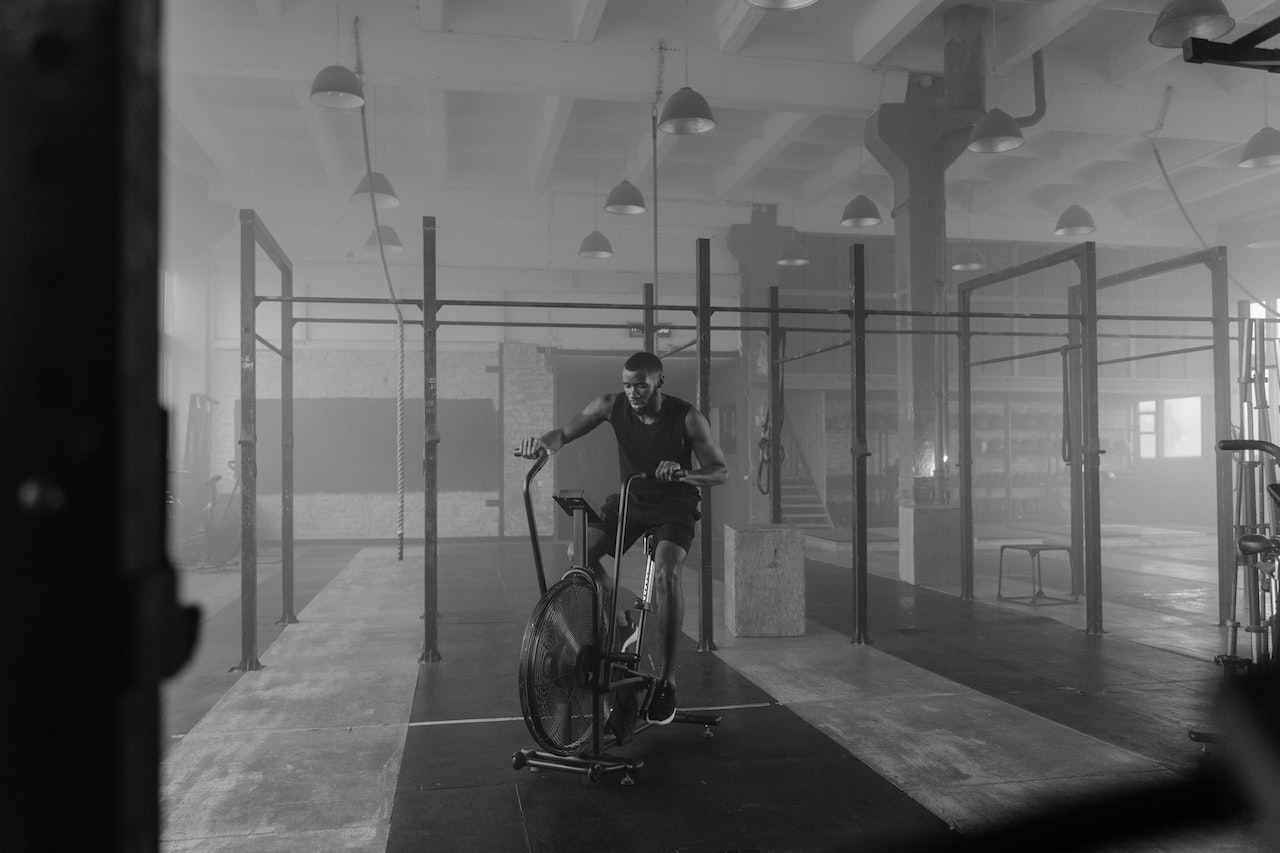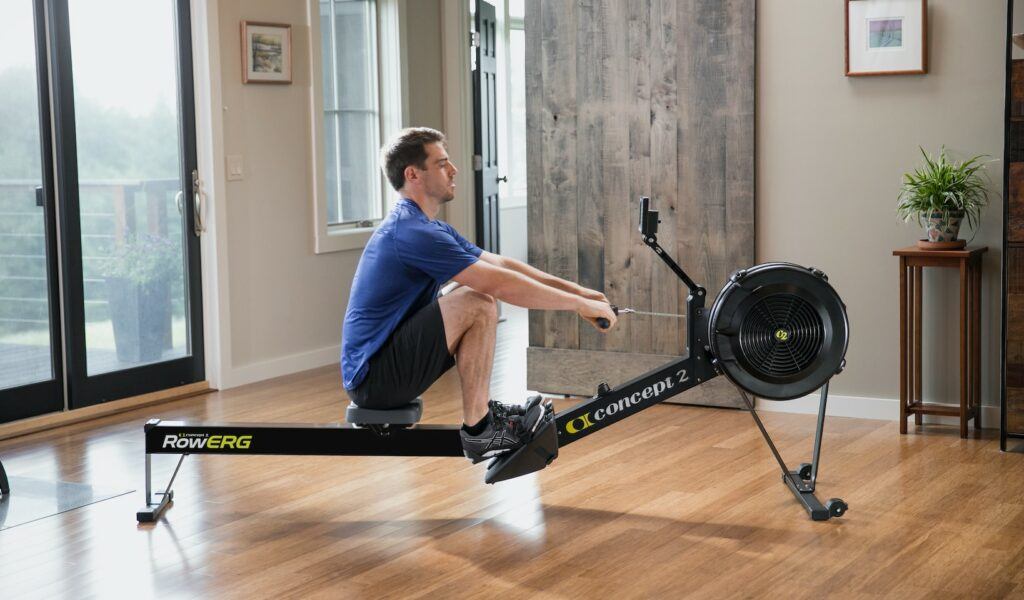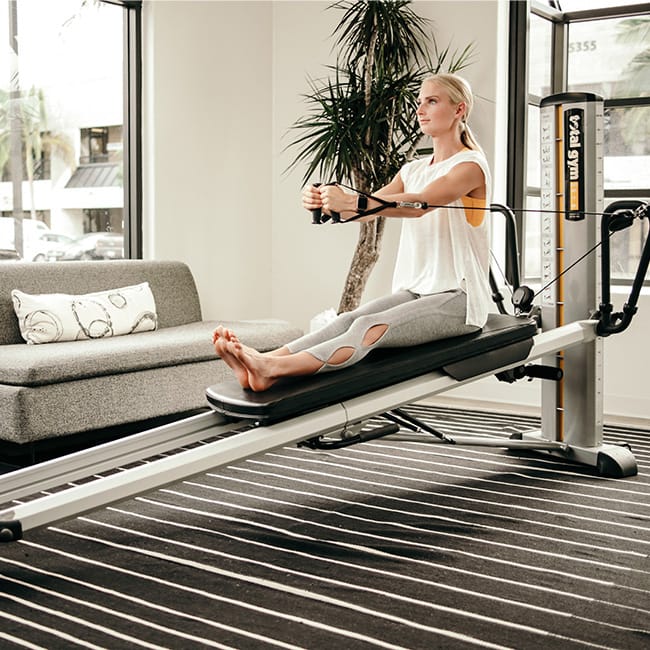What Does PR Stand For In The Gym? PR Meaning Explained
If you are new to working out then you may have come across PR and found yourself wondering “What does PR mean at the gym?”.
You don’t want to give yourself away as a newbie so haven’t asked anyone, but fear not I am here to share all that there is to know about what PR means in working out.
In the realm of fitness and strength training, the acronym “PR” carries significant weight.
PR stands for “Personal Record,” and it serves as an essential metric for gauging progress, establishing goals, and sustaining motivation on your fitness journey.
In this guide, we will delve deeply into the world of PRs, exploring their various dimensions, taking a look at the different forms they take, discovering strategies to set and conquer them, and understanding why they are so valuable.

What Does PR Mean in Gym? Understanding PR
A. What is a PR At the Gym(Personal Record)?
PR stands for Personal Record and represents your best-ever achievement in a specific exercise or activity. It’s the pinnacle of your performance, representing the highest level of accomplishment you’ve reached thus far.
When it comes to working out in a home gym (or any gym), you are only ever competing against yourself as you work towards becoming the fittest and healthiest version of yourself that you can be.
So PR is the perfect way of measuring progress and motivating yourself to improve.
PRs are sometimes known as PB’s or personal best. The meaning is the same, its your record or best performance at an exercise.
B. Why PRs Matter in Fitness and Strength Training
PRs function as potent motivators, serving as benchmarks to consistently improve your performance.
The pursuit of PRs becomes a personal competition, a relentless drive that propels you forward on your fitness journey.
This may be your fastest 1000m on a rowing machine, most reps on a Bowflex gym, or conquering a tough incline run on your treadmill.
C. Different Types of PRs
PRs are multifaceted, adapting to various facets of your fitness voyage.
1. 1-Rep Max (1RM) PR
1RM represents the maximum weight you can lift for a single repetition. It is the gold standard for evaluating raw strength.
- How to Test and Calculate Your 1RM: To ascertain your 1 rep max, initiate with a weight you can comfortably manage and incrementally increase it until you can barely complete one repetition.
- Role of 1RM in Strength Workouts: Understanding your 1RM empowers you to tailor your strength-training regimens to your capabilities, ensuring that you continuously challenge your limits.
2. Repetition Max (RM) PR
RMs, characterized by numbers like 5RM or 10RM, denote the maximum weight you can lift for a specific number of repetitions. They are pivotal for building muscle endurance and promoting hypertrophy.
- Testing and Calculating RM PRs: Determine your RM by finding the heaviest weight you can lift for the prescribed number of reps.
- Contribution to Muscle Endurance: RM PRs are instrumental in assessing your capacity for executing repetitive movements, a critical component in building muscle endurance and fostering muscle growth.
3. Time-Based PR
Time-based PRs revolve around setting records based on time or duration, such as achieving your fastest mile time or maintaining a plank position for an extended period.
- Tracking Cardio and Bodyweight Exercises: Time-based PRs are exceptionally useful for monitoring progress in cardio workouts and bodyweight exercises, offering a dynamic dimension to your fitness evolution.
- Incorporating Time-Based PRs: Integrating time-based records into your fitness regimen introduces a competitive edge and provides additional insight into your progress.
PR vs. 1RM: Understanding the Distinction
In our exploration of Personal Records (PRs) and the types of PRs, it’s essential to address a common point of confusion: the difference between a PR and a 1-Rep Max (1RM).
While both terms relate to strength assessment, they are not interchangeable. Let’s unravel this distinction to ensure clarity in your fitness journey.
A. PR (Personal Record)
A PR, or Personal Record, represents your personal best in a specific exercise or activity. It is the highest achievement you’ve reached, a testament to your peak performance.
PRs serve as tangible markers of your progress and motivation, pushing you to continually outdo yourself.
B. 1-Rep Max (1RM)
1RM, on the other hand, stands for “one-repetition maximum.” It refers to the maximum weight you can lift for a single repetition in a particular exercise. While 1RM is a significant component of strength assessment, not every 1RM qualifies as a PR.
C. Clarifying the Distinction
To understand the difference, consider the following scenario:
Imagine your bench press PR is an impressive 250 pounds. This achievement was reached when you weighed 200 pounds.
However, a year later, you find yourself 30 pounds lighter, weighing in at 170 pounds. You decide to test your bench press strength again.
Under these circumstances, you manage to complete a single repetition with 240 pounds.
In this scenario, the weight difference due to your changed body composition plays a crucial role. While your current 1RM is 240 pounds, it doesn’t qualify as a PR. Your all-time best for one rep remains at 250 pounds, achieved at a different point in time under different conditions.
D. Factors Influencing PRs vs. 1RMs
Several factors can influence whether a 1RM qualifies as a PR:
- Motivation: Your motivation and mental state on the day of testing can affect your performance. A particularly determined day might lead to surpassing your PR, while a less motivated day might yield a lower 1RM.
- Equipment: The quality and condition of the equipment you use can impact your 1RM. Well-maintained equipment and specialized bars can make a significant difference in your lifting capacity.
- Energy Levels: Your energy levels, nutrition, and rest in the lead-up to testing your strength can influence your 1RM. Being well-rested and properly fueled can lead to better results.
- Rules and Standards: Adherence to consistent rules and standards in your testing is crucial. Small deviations in form, technique, or judging criteria can affect your 1RM.
- Body Weight: As illustrated in the scenario, changes in your body weight can impact your strength levels. Losing or gaining weight can influence your ability to lift heavier or lighter loads.
In essence, while 1RM is a valuable metric for assessing your strength, not every 1RM represents a PR.
PRs encompass a broader spectrum of personal bests, considering various factors beyond just the weight lifted. Understanding this distinction allows you to set realistic goals and appreciate the nuanced aspects of your fitness achievements.

Setting and Achieving PRs
A. Goal Setting for PRs
The foundation of PR accomplishment is rooted in setting precise, attainable goals.
Adhering to the SMART criteria (Specific, Measurable, Achievable, Relevant, Time-bound) allows you to set your goals effectively which will help you to seta new PR in working out.
B. Progressive Overload: The Path to PR Success
Progressive overload stands as the bedrock principle behind PR achievement. It revolves around incrementally intensifying your workouts to facilitate growth and adaptation.
- Gradual Increases: Increment the resistance or intensity progressively, avoiding sudden jumps to prevent injuries while ensuring steady progress.
- Proper Form: Emphasizing the importance of maintaining impeccable form and technique is paramount to optimizing your workouts, reducing the risk of injury, and realizing the full potential of your PRs.
C. Training and Programming Tips for PR Success
Achieving PRs involves a holistic approach that extends beyond simply lifting heavier weights.
- Exercise Selection and Variation: Rotate your exercises to target different muscle groups, prevent plateaus, and maintain long-term motivation.
- Warm-Up and Cool-Down: Implementing thorough warm-up and cool-down routines is pivotal to mitigating the risk of injury, enhancing performance, and expediting recovery.
- Recovery and Nutrition: Prioritize adequate rest and proper nutrition, as they play pivotal roles in supporting your body’s capacity to attain and surpass PRs.

Tracking and Recording PRs
A. The Importance of Keeping Records
Maintaining a meticulous record of your PRs is indispensable. It provides a tangible record of your progress, illuminating areas that require refinement or further attention.
B. Methods for Tracking PRs
Select a tracking method that aligns with your preferences—whether it be using fitness apps and digital tools for convenience or opting for traditional logbooks and journals if you appreciate a tangible record of your accomplishments.
C. The Benefits of Reviewing Past PRs
Frequent revisitation of your previous PRs bestows several benefits, including a boost in motivation and confidence. Furthermore, it allows you to discern patterns and trends in your progress, providing valuable insights for future improvements.
Celebrating and Reflecting on PRs
A. The Psychological Impact of Hitting a PR
Hitting a PR extends beyond the realm of physical achievement; it is a resounding mental triumph. The surge in confidence and motivation it generates propels you further towards your fitness aspirations.
B. The Role of Positive Reinforcement and Rewards
Celebrate your PR accomplishments; positive reinforcement reinforces your dedication and commitment. Whether it involves treating yourself to a nourishing meal or indulging in new workout attire, these rewards solidify your sense of achievement.
C. Learning from Setbacks and Failed Attempts
Setbacks and failed attempts at PRs are not defeats; they are invaluable learning experiences. These moments offer profound insights, enabling you to refine your approach, enhance your technique, and continue progressing on your fitness journey.
Other Commonly Used Acronyms
You’re stepping into a world that has its own language, filled with acronyms and terminology that may seem perplexing at first.
Fear not, for we’ll demystify some of these common gym acronyms to ensure you’re well-equipped to navigate the fitness landscape.
1. AMRAP – As Many Reps As Possible
AMRAP is a technique that involves pushing your limits on your favorite gym equipment by performing as many repetitions as you can with a specific weight, all while maintaining proper form. It serves as an excellent tool to gauge your strength and endurance, especially in different rep ranges.
2. RPE – Rate Of Perceived Exertion
RPE is a subjective measure that allows you to assess how challenging a set is on a scale of 1 to 10. A score of 10 signifies that you’ve pushed yourself to the point of muscle failure, while lower scores indicate varying levels of effort and difficulty.
3. ROM – Range Of Motion
The Range of Motion (ROM) pertains to the extent of movement during an exercise. It defines the distance traveled by the weight or your body during each repetition. Focusing on achieving full ROM in exercises is crucial for ensuring that you’re engaging the targeted muscles effectively.
4. LSRPE – Last Set Rate Of Perceived Exertion
Similar to RPE, LSRPE (Last Set Rate Of Perceived Exertion) narrows the focus to the final set of an exercise. It’s a valuable tool for evaluating the intensity of your last set, offering insights into whether you’re pushing yourself to your limits and achieving the desired level of effort.
By familiarizing yourself with these commonly used acronyms, you’ll not only understand the language of the gym better but also enhance your ability to communicate with fellow fitness enthusiasts and trainers.
As you gain experience, these terms will become second nature, guiding you toward more effective and informed workouts.
What Does P.R. Stand For? The Bottom Line
I hope that you now have a good understanding of PR meaning. Gym users should take note of their PR as it is a hugely valuable motivator as well as a key indicator of your progress.
PRs stand as the lifeblood of progress in the gym, serving as potent markers of achievement and continual improvement.
Armed with an in-depth understanding of diverse PR types, strategies to set and conquer them, and an appreciation for tracking and celebrating these milestones, you are now better equipped to embark on a journey of growth and personal evolution in your fitness pursuits.
Set your goals, embrace challenges, and let New Personal Records guide you toward a fitter, stronger, and more accomplished version of yourself. Your journey to fitness excellence begins here.
*As an Amazon Associate I earn from qualifying purchases.


